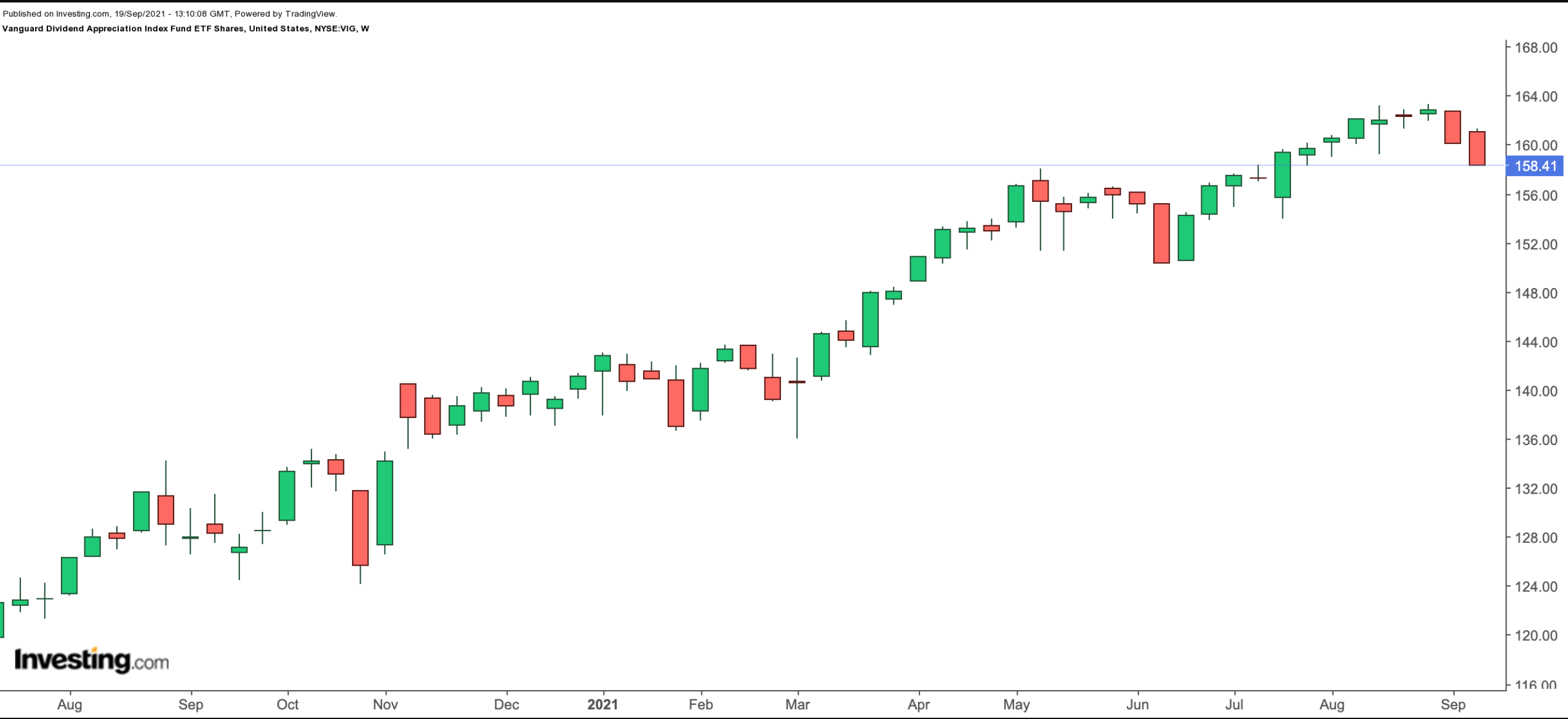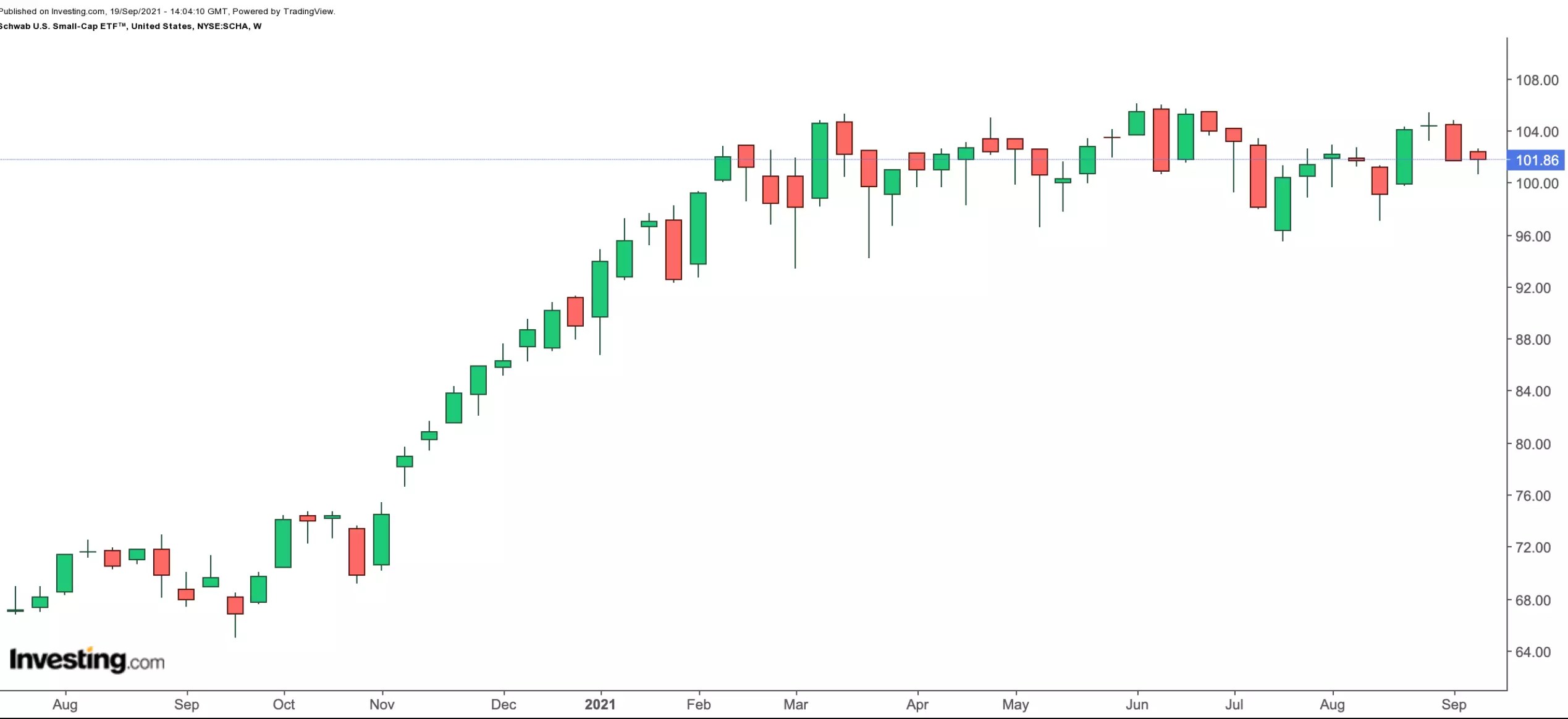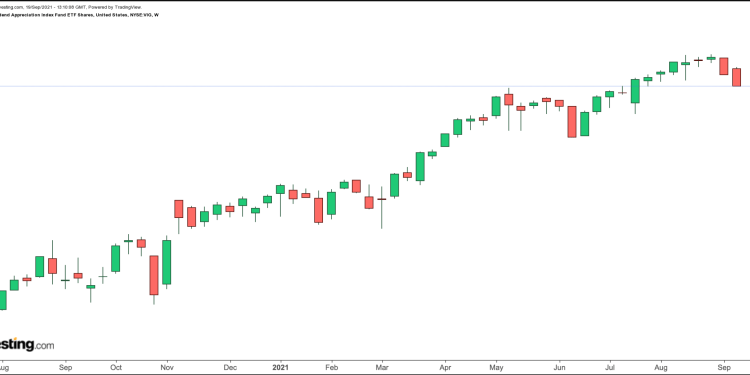Buy-and-hold investors are noticing that September has brought volatility and declines in broader markets. So far in the month, the Dow Jones Industrial Average, the S&P 500 and the NASDAQ 100 are down around 2.5%, 2.4% and 2.1%, respectively.
However, readers investing for financially comfortable retirement years should not worry much about the daily adrenaline rush in the markets. Put another way, for most retail investors short-term market timing of stocks is not necessarily the best strategy.
Instead, buying and holding robust companies can help individuals achieve significant returns. For instance, over the past decade, the average annual total return of the S&P 500 index has been well over 10%. When we consider longer periods, the average return has been about 8% per annum.
Let’s assume an investor is now 35 years old with $10,000 in savings and he or she plans to retire at age 65. That individual now decides to invest their $10,000 in several ETFs and make an additional $3,600 in contributions annually at the start of the year.
If this person has 30 years during which to invest and receives an annual return of 7%, compounded once a year, at the end of 30 years, the total amount saved will be close to $439,985.
If the annual return were to go up to 9%, the amount would become $667,548.
Saving $3,600 a year means putting aside $300 a month or around $10 a day. And if the amount contributed is increased to $4,800 a year, at a return rate of 7%, total savings over 30 years jumps to over $561,273.
Therefore, today’s article introduces two exchange-traded funds (ETFs) that could appeal to buy-and-hold investors who want to save for the later years of their life.
1. Vanguard Dividend Appreciation ETF
Current Price: $158.41
52-week range: $124.14 – $163.25
Dividend Yield: 1.61%
Expense Ratio: 0.06% per year
The Vanguard Dividend Appreciation Index Fund ETF Shares (NYSE:VIG gives exposure to businesses that constantly grow dividends. As one of the largest ETFs stateside, net assets are over $76.5 billion. It was launched in April 2006. VIG Weekly
VIG Weekly
VIG, which tracks the returns of the the NASDAQ US Dividend Achievers Select, is a passively managed fund. It is made up of companies with at least a decade of regularly increasing annual dividend payouts. Therefore, the fund deserves the attention of those seeking passive income in addition to growth.
The fund consists of 247 US-based firms. As far as sectors are concerned, industrials have the largest slice with 21.5%, followed by consumer discretionary (16.6%), health care (15.10%) and financials (14.20).
The leading ten names comprise close to a third of net assets. Put another way, it is top heavy. Microsoft (NASDAQ:MSFT), JP Morgan Chase (NYSE:JPM), Johnson & Johnson (NYSE:JNJ), Walmart (NYSE:WMT), UnitedHealth (NYSE:UNH), Visa (NYSE:V) and Home Depot (NYSE:HD) lead the stocks in the roster.
Over the past 52 weeks, VIG has returned 22.5% and is up 12.2% so far in 2021. It hit a record high in early September. A potential decline toward the $155 level or below would improve the margin of safety.
2. Schwab US Small-Cap ETF
Current Price: $101.86
52-week range: $64.94 – $106.13
Dividend yield: 1.01%
Expense ratio: 0.04%
Our second fund, namely the Schwab US Small-Cap ETF™ (NYSE:SCHA)), invests in small-capitalization (cap) US equities. Although different brokerages might have different definitions, small-caps stocks are usually those that have market capitalizations between $300 million and $2 billion. Another way to think about these businesses is as those whose value investors have not yet fully recognized.
 SCHA Weekly
SCHA Weekly
SCHA, which has 1853 holdings, tracks Dow Jones US Small-Cap Total Stock Market Index. The fund started trading in November 2009.
The top 10 companies make up about 4% of net assets of $17.7 billion. In terms of sectors, we see health care (16.58%) followed by industrials (15.67%), financials (15.52%) and consumer discretionary (15.00%).
Leading holdings include the web infrastructure and security group Cloudflare (NYSE:NET); AMC Entertainment Holdings (NYSE:AMC), which has become a widely followed meme stocks; gaming and hospitality heavyweight Caesars (NASDAQ:CZR); life sciences company Repligen (NASDAQ:RGEN); and specialty retailer Floor & Decor Holdings (NYSE:FND).
The fund returned 45% in the past year and almost 14.5% year-to-date. Stocks comprising the ETF have come under pressure since SCHA hit a record high in early June. A further decline below $100 would offer a better entry point for buy-and-hold investors.
Source: Investing.com




















